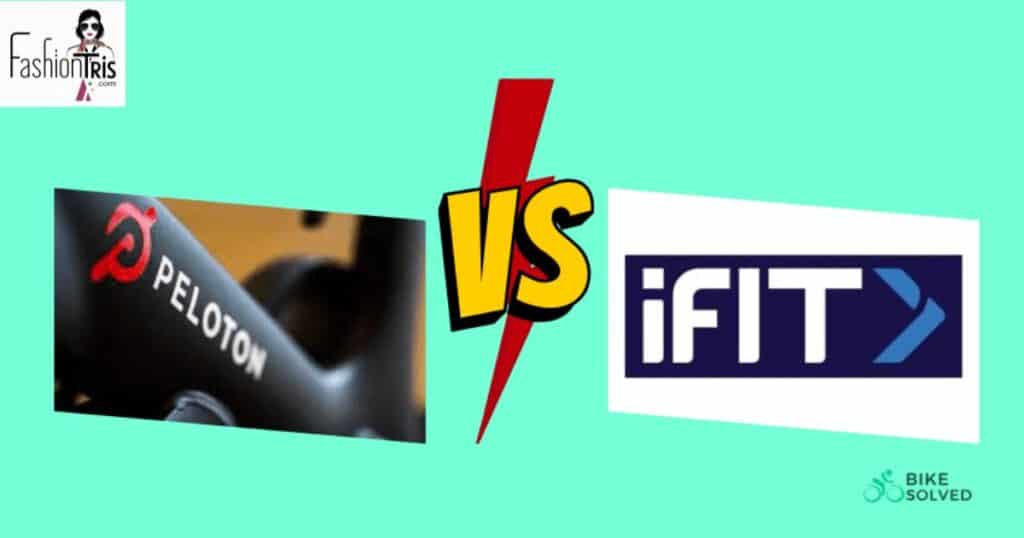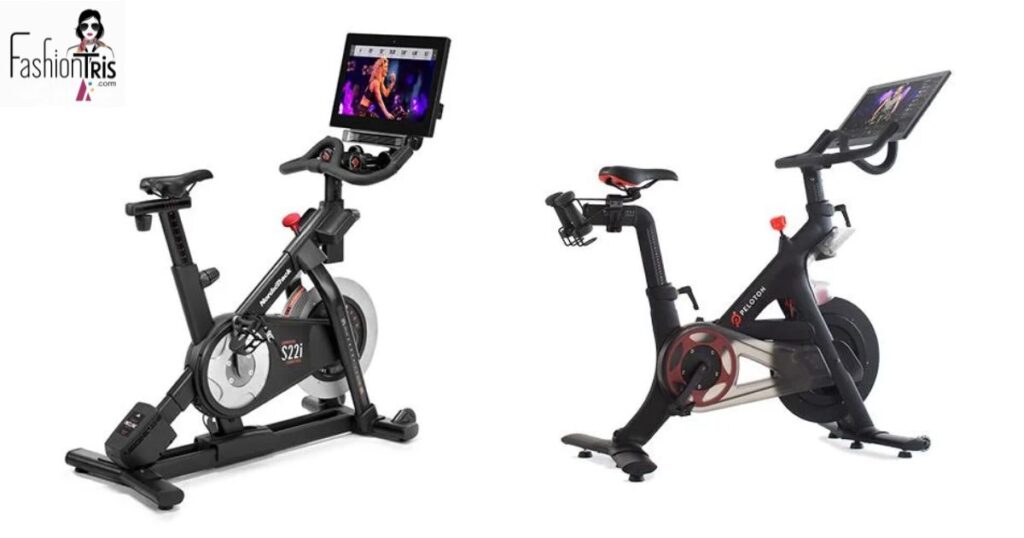Peloton and iFIT have emerged as industry titans, captivating exercise enthusiasts worldwide with their innovative and immersive workout experiences.
This comprehensive comparison of Peloton vs IFIT dives deep into the core offerings, strengths, and potential drawbacks of these two powerhouses, providing a meticulous analysis of their cutting-edge technology, diverse workout programs, community engagement, pricing structures, and overall value propositions.
Whether you’re a seasoned fitness devotee or embarking on a new wellness journey, understanding the nuances of Peloton is crucial in selecting the platform that seamlessly aligns with your aspirations, empowering you to make an informed decision that will propel you toward your fitness goals with unwavering confidence.
Overview of Peloton and Ifit
Peloton and iFit are two leading players in the home fitness industry, offering interactive and immersive workout experiences through their respective platforms. Peloton is renowned for its high-end spin bikes and treadmills, coupled with live and on-demand cycling, running, strength training, and yoga classes led by energetic instructors.
iFit, on the other hand, provides a vast library of global and studio workouts across multiple disciplines, ranging from strength training and yoga to hiking and rowing, accessible through compatible fitness equipment or their app. Both companies leverage cutting-edge technology, motivating instructors and vibrant communities to deliver engaging and personalized fitness journeys from the comfort of home.
Similarities in Peloton and Ifit
Here are some key similarities between Peloton and iFit in terms of their trial periods, app availability, compatibility, affordability, and equipment requirements:
30-Days Trial
Both Peloton and iFIT offer new users a 30-day free trial period, allowing them to explore the platforms and their features before committing to a subscription.
Applications for both Android and iOS
Peloton and I have developed user-friendly mobile applications for Android and iOS devices, enabling users to access their workout content and features on the go.
Compatibility
While Peloton’s equipment is proprietary, iFIT’s workout programs and content can be accessed through various compatible fitness equipment from brands like NordicTrack, ProForm, and FreeMotion, as well as through their mobile app.
Inexpensive
Compared to traditional gym memberships or in-person fitness classes, both Peloton and iFIT offer relatively inexpensive monthly subscription plans, making their services more accessible and budget-friendly for many users.

Equipment Requirement
While Peloton requires users to purchase their branded exercise equipment (bikes or treadmills), it offers the flexibility to access their content through compatible fitness equipment or their mobile app without the need for any proprietary hardware.
These similarities demonstrate that both platforms aim to provide accessible and convenient fitness solutions by offering trial periods, cross-platform availability, compatibility with various devices and equipment, and affordable subscription options, catering to a wide range of users and their diverse fitness needs.
Differences in Peloton and Ifit
On-demand Fitness Classes
Peloton and iFit offer a wide range of on-demand fitness classes that can be accessed anytime. However, Peloton’s classes primarily focus on cycling, strength training, and yoga, while iFit provides a more diverse range of workouts, including hiking, cross-training, and even outdoor adventures.
Auto Equipment Adjustment
Peloton’s bikes and treadmills feature automatic resistance and incline adjustment based on the instructor’s cues during live and on-demand classes. iFit also offers automatic adjustment capabilities, but they may vary depending on the specific equipment you’re using.
Music Choice
Both platforms offer curated playlists and music during their classes. However, Peloton allows users to select and stream their preferred music from various streaming services, providing a more personalized audio experience.
Bootcamp vs. Event Classes
Peloton refers to their high-intensity interval training (HIIT) classes as Bootcamp classes, while iFit refers to them as Event classes. These classes incorporate a combination of strength training, cardio, and functional movements.
You might want to check: Unlocking the Benefits of Walking Backwards: A Guide to Improving Health and Brain Function

Active Pulse and Active Smart
iFit’s Active Pulse feature tracks your heart rate during workouts and adjusts the intensity accordingly, while Active Smart automatically adjusts the resistance or incline based on your performance. Peloton does not offer similar features.
Class Offerings
Peloton focuses primarily on cycling, running, strength training, yoga, and meditation classes. iFit offers a broader range of workout options, including hiking, cross-training, and outdoor adventures, catering to a broader range of fitness enthusiasts.
Live Classes vs Live Events
Peloton offers live classes led by instructors in real-time, while iFit refers to these as Live Events. Both platforms allow users to participate in these live sessions or access them on-demand later.
Social vs. Personal
Peloton emphasizes a more social and community-driven experience, with features like leaderboards, high-fives, and the ability to follow and interact with instructors and other users. iFit, on the other hand, focuses more on a personalized experience tailored to individual fitness goals and preferences.
These are some of the critical differences between Peloton and iFit in terms of their class mechanisms, offerings, and features. Both platforms cater to different fitness preferences and lifestyles, so choosing one over the other depends on your specific needs and goals.
Which one should I choose? Peloton or IFIT?
The choice between Peloton and iFit ultimately depends on your specific fitness goals, preferences, and budget. Here are some factors to consider:
- Workout variety: If you primarily enjoy cycling, running, strength training, and yoga, Peloton may be the better option as it specializes in these areas. However, if you prefer a more diverse range of workouts, including hiking, cross-training, and outdoor adventures, iFit could be a better fit.
- Equipment: Peloton offers high-quality exercise bikes and treadmills, while iFit is compatible with a broader range of equipment from various brands, including ellipticals, rowers, and strength training machines.
- Live and on-demand classes: Both platforms offer live and on-demand courses. Peloton is known for its energetic live classes and a strong sense of community, while iFit focuses more on personalized on-demand workouts.
- Automatic adjustments: Peloton’s bikes and treadmills automatically adjust resistance and incline based on the instructor’s cues. At the same time, iFit’s Active Pulse and Active Smart features adjust intensity based on your heart rate and performance.
- Music integration: Peloton allows you to stream your preferred music from various services, while iFit primarily uses curated playlists.
- Budget: Peloton’s equipment and subscription fees are generally more expensive than iFit so budget considerations may play a role in your decision.
If you prioritize a strong sense of community, live cycling and strength training classes, and music integration, Peloton could be the better choice. However, if you value workout variety, personalized experiences, and automatic intensity adjustments, iFit might be the more suitable option. Ultimately, it’s essential to evaluate your specific needs and preferences to make the best decision.

Frequently Asked Question
What type of workouts does each platform offer?
Peloton primarily focuses on cycling, running, strength training, and yoga classes, while iFit provides a more diverse range of workouts, including hiking, cross-training, and outdoor adventures.
How do the equipment and integration capabilities differ?
Peloton offers its high-quality exercise bikes and treadmills with automatic resistance and incline adjustment based on the instructor’s cues. iFit, on the other hand, is compatible with a broader range of equipment.
Which platform offers a better social and community experience?
Peloton is known for its strong sense of community, with features like leaderboards, high-fives, and the ability to follow and interact with instructors and other users. iFit focuses more on a personalized experience tailored to individual fitness goals and preferences.
How do the pricing and subscription models compare?
Peloton’s equipment and subscription fees are generally more expensive than iFit. Peloton bikes start at around $1,495, with a monthly subscription of $39. iFit’s subscription plans range from $15 to $39 per month, and the equipment costs vary depending on the brand and type.
Which platform offers better music integration?
Peloton allows users to select and stream their preferred music from various streaming services, providing a more personalized audio experience. iFit primarily uses curated playlists and music during their classes.
Final thoughts
In the ever-evolving landscape of home fitness, both Peloton and iFit have carved out their distinct niches, catering to diverse fitness enthusiasts with their innovative offerings. While Peloton’s strength lies in its immersive cycling, running, and strength training experiences bolstered by a vibrant community and seamless music integration, iFit shines with its vast array of global workouts, personalized intensity adjustments, and compatibility with a wide range of equipment.
The choice between these two powerhouses hinges on an individual’s specific fitness goals, preferences, and budget considerations. Those seeking a dynamic, community-driven experience may gravitate towards Peloton, while those craving a more diverse and personalized fitness journey may find their stride with iFit.

With over 10 years of experience working in the fashion industry, I bring a unique expertise to my role. I am looking forward to sharing my knowledge and insights on the latest trends with my readers.











